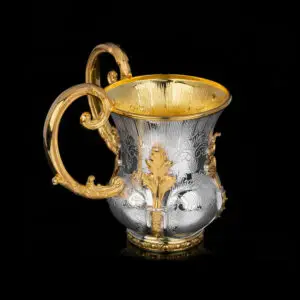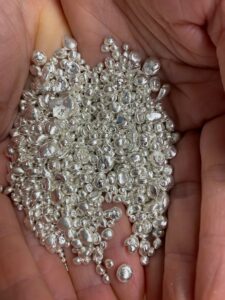The Radiant Mystery Behind Gold’s Yellow Hue
Gold has fascinated humanity for millennia, captivating minds with its shimmering luster and distinct yellow hue. But what exactly gives this precious metal its renowned golden color?
At its core, gold owes its color to its atomic structure. Most metals derive their color from the way they absorb and reflect light due to the behavior of electrons within their atomic structure. Gold, with its atomic number 79, possesses a unique configuration of electrons in its orbitals that contributes to its distinctive color.
Electron Dance
The natural color of any metal is a result of how its electrons interact with light. In the case of gold, the unique arrangement of its electrons, particularly in its innermost and outermost electron shells, gives it its signature hue. When light interacts with gold, the metal’s electrons absorb certain wavelengths of light, primarily in the blue part of the spectrum, while reflecting and transmitting others, especially those in the yellow part of the spectrum. This selective absorption and reflection of light create the perception of gold’s classic yellow color to the human eye.
Relativity of Purity
Interestingly, the purity of gold also influences its color. Pure gold, known as 24 karat gold, is naturally more yellow in color compared to lower karatages, such as 18 or 14 karat gold, which contain alloyed metals like silver, copper, or zinc. The presence of these alloys not only alters the physical properties of gold but also impacts its color, sometimes resulting in variations from a deep yellow to a paler shade or even distinct tinges like rose or white gold.
Historical and Cultural Significance
Throughout history, the radiant yellow hue of gold has held significant cultural and symbolic value across civilizations. Its inherent beauty has been associated with the sun, prosperity, and purity in various cultures, leading to its use in religious ceremonies, royal regalia, and as a symbol of wealth and prestige.

Beyond the Spectrum
Moreover, gold’s allure isn’t just limited to its color. Its resistance to corrosion, malleability, and conductivity have made it not only a symbol of opulence but also an essential material in various industries, from electronics to medicine.

Conclusion
The allure of gold’s yellow color is deeply rooted in the intricate dance of its electrons and their interaction with light. Its captivating hue has transcended time, weaving its way through human history, culture, and industry, leaving an indelible mark on our world far beyond its aesthetic appeal.
In essence, the brilliance of gold’s yellow color is not just a visual delight but a testament to the scientific marvels and cultural significance that this precious metal embodies.

A Guide to Major Gold Exchanges Around the World
Where is Gold Traded? A Guide to Major Gold Exchanges Around the World Gold has been a cornerstone of finance and investment for centuries, valued

Metal Detector – Professional Gold and Silver Detector
Metal Detector for Adults – Professional Gold and Silver Detector with LCD Display, High Accuracy Waterproof Pinpoint 5 Modes, 10″ Coil Lightweight Metales Detectors

Essential Guide to Non-Destructive Testing for Precious Metal Authentication
BLOG #1 May -10-2024 Welcome to the inaugural post of “Precious Metals Mechanics by Ami Gur.” In this series, we embark on a journey

About The Blog
Welcome to “Precious Metals Mechanics—by Ami Gur.” This blog is designed to serve as your expert guide through the intricate world of precious metals. Here,

Deciphering the Elegance: How to Grade and Evaluate Silverware
Deciphering the Elegance: How to Grade and Evaluate Silverware In the world of luxury goods, the art of grading and evaluating is often associated

Silver Surge: Navigating Investment Opportunities in 2024
Silver Surge: Navigating Investment Opportunities in 2024 As we step into 2024, silver investors are greeted with a landscape that continues to offer promising opportunities.
